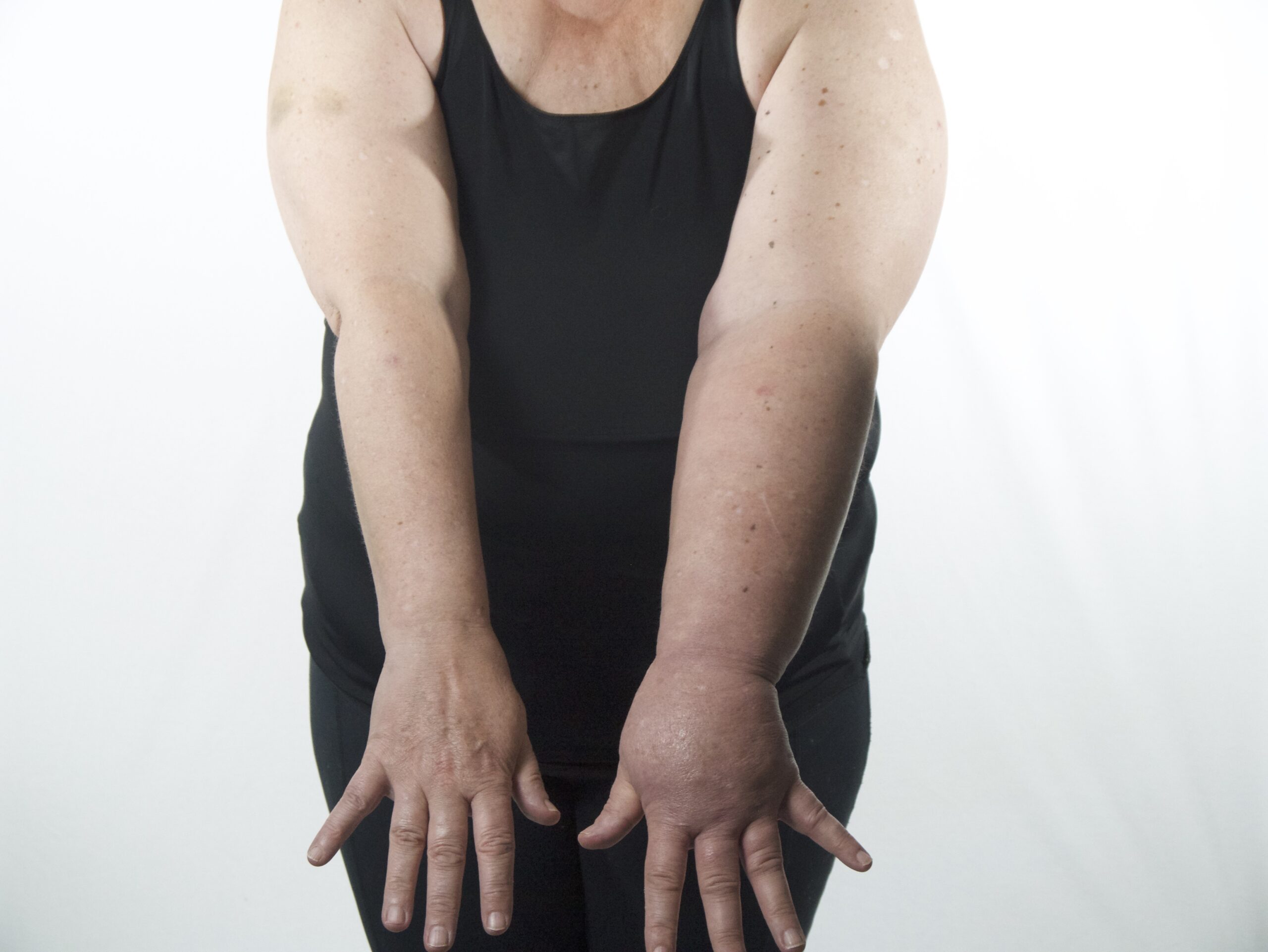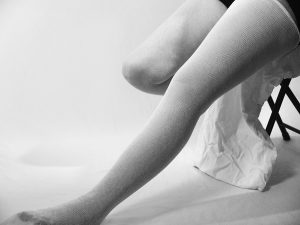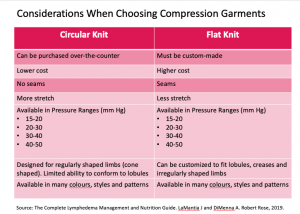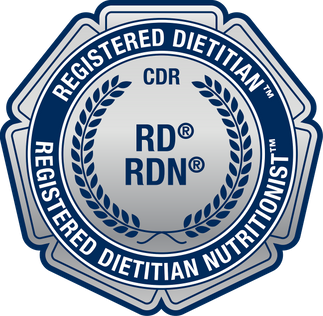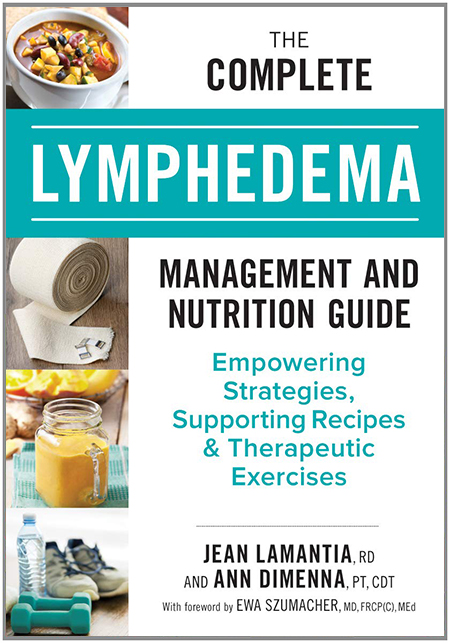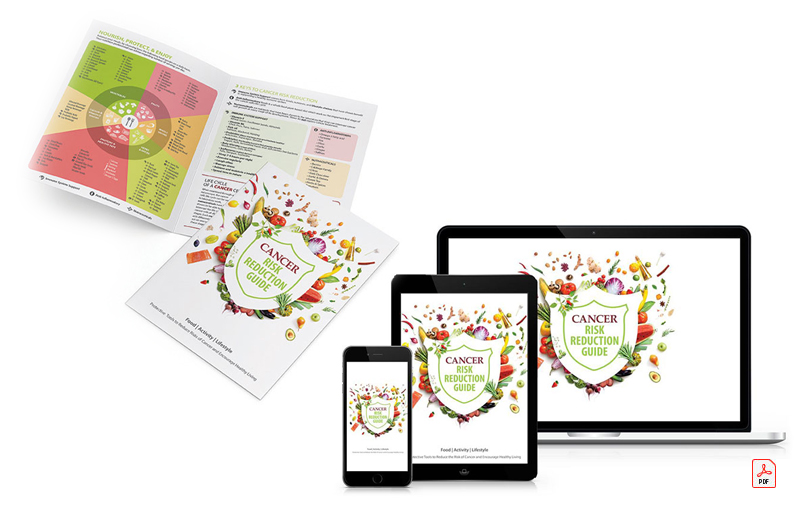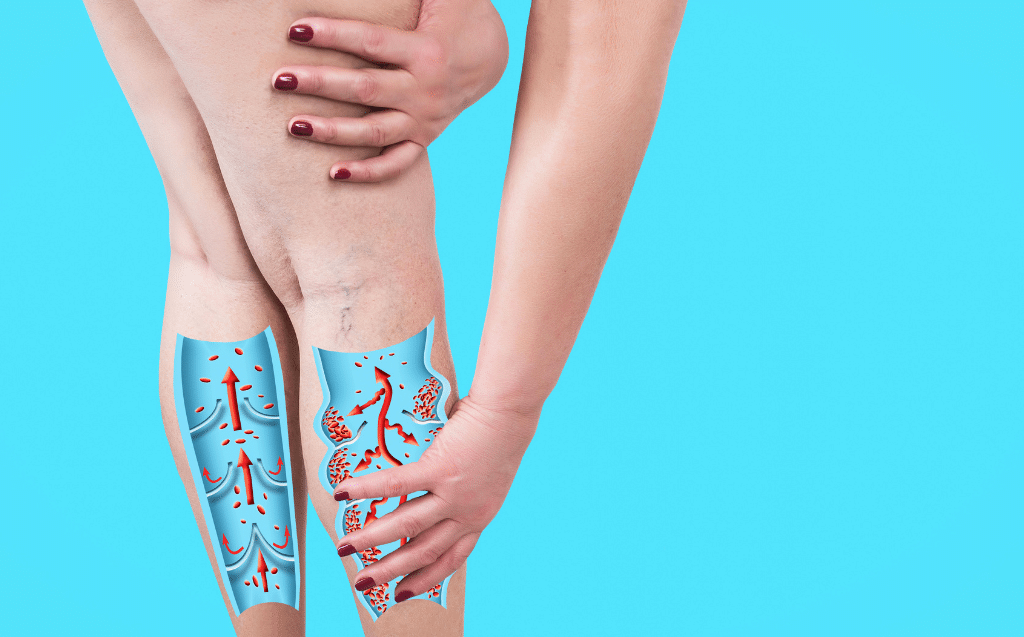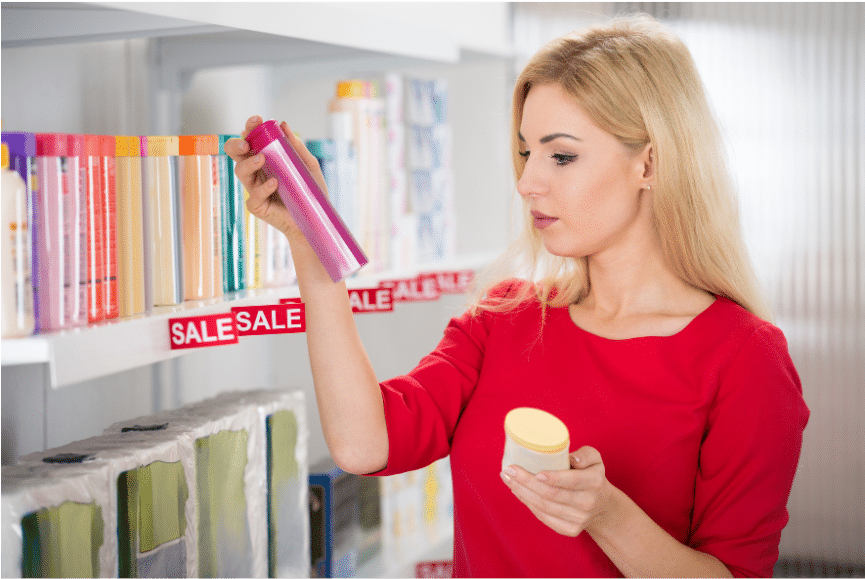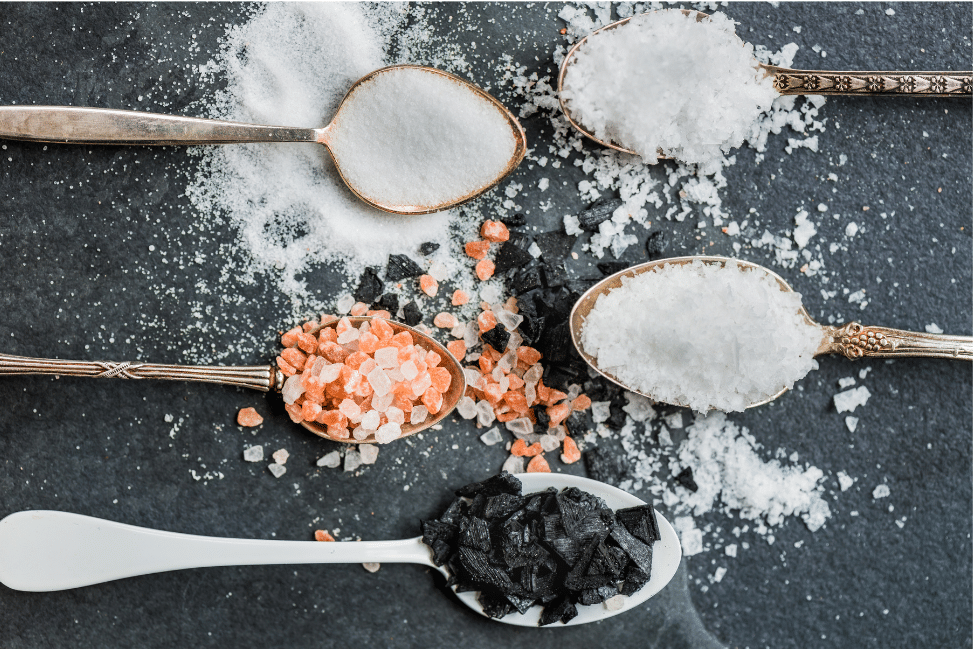Lymphedema is a chronic swelling condition, in which the body accumulates lymphatic fluid.
There are many causes, but the condition is divided into two main categories;
- Primary lymphedema; you are either born with it (lymphedema praecox), or it develops on its own without injury (lymphedema tarda).
- Secondary lymphedema is acquired as a result of an injury to your lymph nodes or vessels or from overwhelm due to excess body weight.
Lyphedema is a chronic condition and requires qualtiy lymphedema products for proper management including bandages, compression garments, pumps and more.
This blog post is not a substitute for medical advice. If you have lymphedema, it is important to be assessed by a lymphedema professional and use the products to manage your lymphedema that are recommended for you specifically.
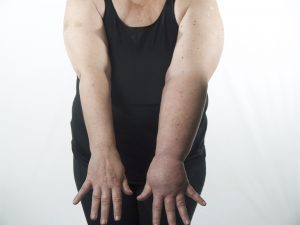
Many of the lymphedema products are actually medical devices such as compression sleeves and pumps and it’s important to use the right lymphedema products and to be trained how to use them by your certified lymphedema therapist. A lymphedema therapist will provide complete decongestive therapy or CDT
CDT for Lymphedema
CDT for lymphoma consists of 4 key elements:
- Compression
- Skin care
- Exercise
- Manual lymphatic drainage
Many of the products that I included in this post are a part of CDT. I’ve also included some non-medical lymphedema products like socks, shoes, clothing that have been recommended to me by people that use them.
This blog post will outline a collection of the various products for lymphedema. I’ve also included links to products to make finding them easier. Some links go directly to amazon where, as an amazon associate I earn from qualifying purchases, but you are welcome to purchase products from your preferred retailer.
You can read the entire post top to bottom, or jump to the sections of interest based on this Table of Contents
- CDT for Lymphedema
- Wrapping for Lymphedema
- Self-Adhesive Bandages
- Body Adhesive
- Nighttime Compression Garments
- Velcro Compression Garments
- Donning and Doffing Aids
- Pumps for Lymphedema
- Compression Device Fitters
- Lymphedema Skin Care
- Electric Shavers
- Skin Wounds and Lymphorrhea Care
- Kinesio Tape for Lymphedema
- Lymphedema Book
- Lymphedema Journals
- Exercise Equipment for Lymphedema
- Dry Brushing
- Cold Rolling
- Shoes for Lymphedema
- Socks for Lymphedema
- Clothes for Lymphedema
- Lymphedema Professionals
- Lymphedema Bloggers
- Lymphedema Awareness and Advocacy
- Nutrition for Lymphedema
Wrapping for Lymphedema
Wrapping, also called bandaging and multilayer compression bandaging, is the best way to reduce your lymphedema. But, it’s important to get trained on how to do it properly and to be using the right products for your lymphedema.
For example, it’s important to choose short-stretch bandages for lymphedema. While the different elastic bandaging looks alike, a regular tensor bandage that you might use for a sprained ankle, is too stretchy for lymphedema wrapping. In fact, using regular stretchy bandaging can make your lymphedema worse.
There are several layers to lymphedema wrapping, here is a brief description of the products for lymphedema wrapping and some of the brands recommended by lymphedema professionals.
Gauze
This is used to wrap fingers and toes.
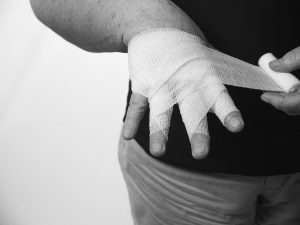
Stockinette or Tubular Bandage
This is used to protect the skin, absorb sweat, dead skin cells and oils and keep the next layer of padding clean. This comes in various sizes to fit over your arm or leg.
- TG
- Tricofix
The stockinette is worn on the arm or leg to protect the skin, absorb sweat, dead skin cells and oils and keep the next layer of bandaging clean.
Synthetic Padding
This helps to evenly distribute pressure from the short-stretch bandages that will be applied on top. You can purchase the padding in 10 feet rolls (3 metres) and you would use a 4″ wide role for arms and lower legs and a 6″ wide role for thighs. Your lymphedema therapist will advise you which width to use and how to apply it.
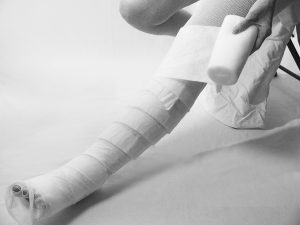
Short-Stretch Bandages
These provide the compression which moves the lymphatic fluid out. You need to be trained by your certified lymphedema therapist how to apply it properly. You should have the most pressure in the hand or foot and the least amount at the shoulder or thigh to create the proper pressure gradient. This is done by having more layers of bandage to create more pressure. Getting trained by a certified lymphedema therapist is essential (keep reading for how to find a therapist).
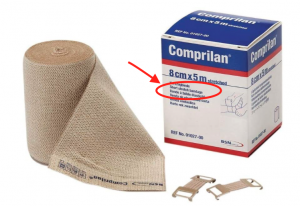
Open-Cell Foam
This adds additional pressure. The foam comes in rolls of 16 feet by 4 inches (or 5 metres by 10 cm).
Closed-Cell Foam
This is also used to add additional pressure. Different sizes of closed-cell foam are available.
Grey Foam or Channel Foam
This foam helps to break up scar tissue. Each sheet is 1 foot by 3 feet (30 cm by 90 cm) and can be cut into the thickness you need.
- Grey Foam
- Channel Foam
You also need products to take care of your bandages! These include; masking tape – to tape them up, laundry bags to wash them in, and a bandage roller comes in really handy to help you roll up your clean bandages!
Bandage Roller
You can use electric or manual bandage rollers, to help you roll your clean bandages to get ready for your next wrapping.
Tape
While bandages come with clips, it’s recommended to use regular old masking tape or medical paper tape to tape your bandages and not the clips. The tape is inexpensive, doesn’t puncture the skin like the clips can and doesn’t leave a gummy residue on your bandages.
Laundry Bag
I have about a half dozen laundry bags that I use for my delicates. I feel that it helps to extend the life of my clothes and I think it can do the same for your bandages and compression garments. They also help separate different bandages, to prevent them from getting too tangled up in the wash. Here are some examples of what I mean;
Large Safety Pins
This is a neat trick to prevent your bandages from getting tangled in the washing machine. First make sure you won’t damage the bandages by doing this – best to check with the manufacturer. If it’s OK, then make U shaped loops with the bandages and gather at the top of the U. Secure with a safety pin and then put into a laundry bag.
These pins are stainless steel so they won’t rust
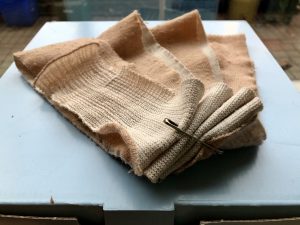
Ideally, during the decompression phase of your lymphedema treatment, you will have two sets of lymphedema bandages. One to wear and one to wash. Most certified lymphedema therapists recommend you wear the wraps for 23 hours. Then you will need to wash, dry and roll that set, while you wear your second set. Having lymphedema involves a great deal of self-care. I often say that caring for lymphedema is a full time job, it’s at least a part-time job!
Self-Adhesive Bandages
Some people with lymphedema have also had success using sticky bandages. There are one-time-use and are cut off and throw out after wearing. Here are some examples:
- Coban
- Dynarex
- Ever Ready
- Compression Garments
A compression garment is the second stage in decompression therapy after lymphedema wrapping. The lymphedema wrapping is designed to reduce the lymphedema, while the compression garment maintains it. If you haven’t had lymphedema wrapping yet, don’t skip this stage, especially if you still have pitting edema.
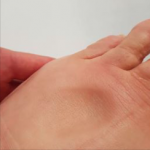
It’s important to find a certified lymphedema therapist (see below for links) who can do lymphedema wrapping for you and teach you how to do it yourself. Once your limb has reduced in size, then you can get a compression garment.
The compression garment can be an over the counter or a prescription product. Obviously, getting a custom made prescription item will be customized to your needs. When you choose a garment there are two main categories – circular knit and flat knit. This chart shows you the difference in the options.
Compression garments are available as:
- Compression sleeves
- Compression gloves
- Compression gauntlets (fingerless gloves)
- Toe caps
- Half or full leg compression
- Compression socks
- Breast and chest compression
- Groin compression
- Head and neck compression
Flat Knit Compression
There are several manufacturers of flat knit custom compression garments, listed below in alphabetical order.
- BSN Medical USA and BSN Medical Canada
- Jobst USA and Jobst Canada
- Juzo USA and Juzo Canada
- LymphdDivas USA
- Medi USA and Medi Canada
- Sigvaris USA and Sigvaris Canada
Circular Knit Compression
You can also purchase over-the-counter circular knit garments from the list above. In addition, there are other manufacturers that make over-the-counter compression garments, mostly compression socks and compression sleeves
Caring for your Garments
Once you have the garments it’s important to take care of them. According to Jobst, you should wash them daily or every other day. Wash inside out and close the zipper (if your’s has a zipper), place in a laundry bag (see above), use mild laundry soap, and don’t use: fabric softener, bleach, stain remover, or brighteners. Use a low spin rate (600 cycles). Do not wring them out, or dry in direct sunlight or on a radiation. Instead, dry at low temperature in a dryer or lay flat to dry. Here are examples of what is meant by mild laundry soap;
Body Adhesive
Sometimes, your garments don’t stay up on their own and you need to apply a body adhesive to help them. Here are some examples.
Nighttime Compression Garments
There are different compression garments for daytime and nighttime use. Not everyone needs nighttime compression. You should look into nighttime compression if your lymphedema does not decrease at night or if you have dense fibrotic areas in your lymphedema. Your lymphedema therapist can advise you.
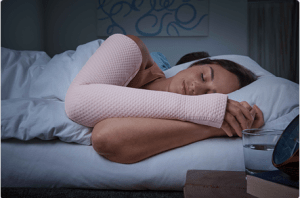
compression does not have as much pressure as daytime compression
Velcro Compression Garments
Sometimes, wrapping yourself is too difficult and you need a system that goes on easier and is more easily adjusted. This is where a velcro wrap is helpful.

Donning and Doffing Aids
Compression garments are notoriously difficult to get on and off. To help with this you can use rubber gloves that give you a better grip and tools that help you to get the garments on and off. Here are some examples of those.
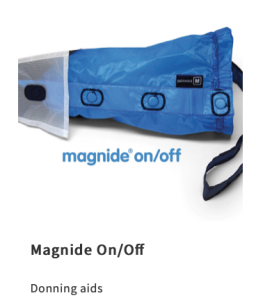
Pumps for Lymphedema
A lymphedema pump, otherwise known as a compression pump and a pneumatic compression pump is used by some people with lymphedema. It can help to compliment the main treatment strategies of compression, exercise, skin care and manual lymphatic drainage. Pumps can be single or multi-chamber.
The pumps may be more effective for those with primary lymphedema who have a sluggish lymphatic system as opposed to a secondary lymphedema who has damaged or missing lymph nodes. It’s essential to consult your certified lymphedema therapist before using a pump, to find out, if you are suitable for a pump and the specific type and settings to use. Here are some lymphedema pumps, in alphabetical order:
Compression Device Fitters
In order to be properly fitted for a compression garment you will need the services of a fitter. This is a person that takes your measurements and completes the order to the manufacturer. In many locations, the fitter can also advise you about private and public financial coverage for your compression garment.
Lymphedema Skin Care
Lymphedema skin care is essential. Your skin is prone to being dry when you have lymphedema and that leaves your skin prone to infections. Skin infections, called cellulitis are a common problem in lymphedema. You need to take cellulitis seriously as it can get bad quickly.
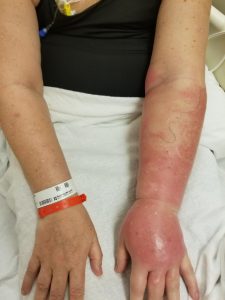
The best moisturizer for lymphedema is one that matches the pH of the skin; 4.7, which is acidic. Here are some low pH moisturizers and cleaners.
Low pH Moisturizers
The following moisturizers have a pH between 3 and 5. Since formulations can be updated, you should confirm by calling the customer information number on the product.
- Aveeno skin relief moisturizing lotion
- Cetophil moisturizing cream
- Eucerin mentol itch relief cream
- Theraplex emollient for severely dry skin
- Vanicream moisturizing skin cream
- Vanicream light moisturizing lotion
- Vaseline intensive rescue skin protectant body lotion
Low pH Cleansers
The cleansers are now as low pH as the moisturizers. Here are some cleansers that have a pH of 6 or less.

For a more complete list of moisturizers, cleansers and products available in Canada and USA, see The Complete Lymphedema Management and Nutrition Guide.
Specialized Creams for Lymphedema Skin
When you have lymphedema, especially for a long time, you may develop redness in the skin or papilloma, which are small benign lumps that form on the skin, often looking like an eraser from a pencil. There are products that can help to treat these conditions as well. The ingredients to look for include lactic acid, urea (carbide), ceramide, glycerin, dimethicone (polydimethylsiloxane and dimethylpolysiloxane), olive fruit oil, and salicylic acid. Here are some examples:
Anti-Chaffing Products and Clothing
Chaffing can be a problem with lymphedema and several products are available that can assist with that. Here are some options;
- Body Glide Original Anti-Chaff Balm
- Caldesene powder
- Gold Bond Friction Defence
- Lanacane Anti-chaffing Gel
- Monistat Care Chaffing relief
If you have thigh chaffing there are clothing items that can help also, such as;
Electric Shavers
When you have lymphedema, it’s important to take exceptional care of your skin, including avoiding cuts to the skin. If you shave your legs, armpits or other areas where you have lymphedema, a manual razor is too risky as cuts are very common. The chemical hair removers can also be too harsh on the skin. Instead, you should only use an electric shaver.
Here are some examples of electric shavers;
Skin Wounds and Lymphorrhea Care
Lymphorrhea is a leakage of lymphatic fluid. The fluid that leaks out is a clear to pinkish colour. It happens when the swelling increases faster than the skin can stretch and creates a wound in the skin. It can also occur after an injury that breaks the skin, then the lymphatic fluid leaks out, or if you have cellulitis – a skin infection that is common in lymphedema.
This is often very troubling for people to manage, as you need to heal the wound, reduce the swelling and deal with all the leaking fluid and make sure it doesn’t sit too long against your skin as it can cause further skin breakdown.
Absorbing the lymph fluid requires absorbent, sterile dressing that doesn’t stick to the skin. Some products you can use to help with lymphorrhea include barrier creams to protect the skin from breakdown and absorbent dressings or bandages.
Barrier Creams
Absorbent Bandages
You can use regular sterile gauze or specially treated bandages such as;
Many people with lymphedema also use feminine hygiene products such as maxi pads as a sterile absorbent bandage to help soak up with lymph fluid and wic it away from the skin. Some have also used diapers, but I would be careful with diapers that are scented, as I think the fragrance could irritate the skin.
Kinesio Tape for Lymphedema
Lymphatic taping is the latest product for lymphedema. This medical tape is 100% cotton with medical grade acrylic adhesive that is body heat activated. There are several brands of tape that can be used for lymphedema.

Lymphedema Book
I’m proud to say that the best book on lymphedema, with the highest amazon rating, is The Complete Lymphedema Management and Nutrition Guide. I used this book as a resource in writing this blog post.

While not specifically written for lymphedema, the book Complete Intermittent Fasting provides and introduction to intermittent fasting which may be a tool that you find helpful in managing your lymphedema.

You can order Complete Intermittent Fasting from Amazon.com or Amazon.ca (affiliate links).
Lymphedema Journals
Tracking your lymphedema measurements, your self care and your nutrition are all positive tools to help you manage your lymphedema. The lymphedema journal for women (affiliate link) will allow you to do this.

The lymphedema weekly log book for men (affiliate link) allows men to track their lymphedema, self care and nutrition. It is a vital tool to keep you accountable and on track.

Exercise Equipment for Lymphedema
The exercises that have been studied in lymphedema research include water fitness, pole walking and yoga. In addition, some people with lymphedema find benefit from using other exercise equipment like a rebounder or vibration plate.
It’s important to keep in mind that the type and cause of your lymphedema will determine what works for you. For example, some people have lymphedema from venous insufficiency, some from ovarian cancer and others from excess body weight. The cause of your lymphedema will make one type of exercise more suitable for you. Talk to your lymphedema therapist.
Here are some types of exercise equipment that you can research for yourself:
Dry Brushing
While this has not been researched, many people with lymphedema recommend dry brushing as a way to stimulate lymph flow and remove dead skin cells from dry skin. When you dry brush, you need to be gentle and not irritate the skin.
Cold Rolling
While not in the published research, many people with lymphedema report that keeping a cold roller in the fridge and gently rolling their lymphedema limb provides some relief when they feel achy.
Shoes for Lymphedema
Finding shoes when you have lymphedema can be a challenge. First of all, your feet may be different widths, your own size may vary day to day with the swelling, and you may need a shoe that accommodates your foot when it’s wrapped or in compression. These brands have been recommended by others with lymphedema. Look for a shoe that has a large top opening, elastic or velcro closure, stretchiness and possibly removable insoles, especially if you wear orthotics.
- Crocs Canada and Crocs USA, the crocs sandal fits a wide foot
- Billy Footwear, zips open so that the entire top of the shoe opens up for your foot
- Dr Comfort, Marla for women or Carter for men is an adjustable shoe that works for some with lymphedema
- Darco, is a shoe designed for post surgery and may work well for lymphedema
- Drew Shoes, makes a fully adjustable shoe
- Finn Comfort, is a German designed shoe line that can accommodate lymphedema
- Orthofeet, has shoes that are extra wide, extra deep and with strap closures to help fit a lymphie foot
- Pandere Shoes, has shoes especially for lymphedema
- Propét USA, and Propét Canada have wide and extra wide and diabetic shoes
- SAS Factory has a line of diabetic/Medicare shoes that may work for lymphedema
- Tingley Overboots, are designed to fit over your regular boot and may be a good option if you need rubber boots
- Zappos Adaptive allows you to buy shoes in different sizes
Socks for Lymphedema
In addition to compression socks, which are part of the compression garment discussion above, people with lymphedema may like to wear a sock, that fits around their lymphedema leg either on its own, or overtop of compression to help keep them up. A company called xpandasox makes an extra wide sock for this purpose.
Clothes for Lymphedema
It can be difficult to find pants to fit comfortably over your lymphedema leg. Try searching for “stretchy wide-leg palazzo pants” and you will find several sellers. It’s difficult to link to a page as the styles change each season.
Some shops that have been recommended by others with lymphedema include the following:
- eShakti, allows you to custom order your clothes so you can get them made to measure
- Holy Clothing, has several full length skirts and wide sleeve blouses
- Woman Within has stretchy pants and wide leg culottes
- Sanctuarie, features plus size and supersize women’s wear
- Venus, while not specifically for lymphedema, several lymphie ladies have found good fits here
In addition to get the proper lymphedema products, and learn how to use them, it’s important to connect with the proper lymphedema professional, organizations and support. Here are some links to help you find the support you need;
Lymphedema Professionals
It’s important to work with a certified lymphedema therapist. You can connect with a therapist in one of these directories when you search the “Lymphedema Therapist Near Me” feature on these websites, where you may find an individual practitioner or a lymphedema clinic:
- Canadian Lymphedema Framework
- National Lymphedema Network (USA)
- Australasian Lymphology Association
- MLD UK
- Lymphedema Education & Research Network USA
This blog post is not a substitute for medical advice. If you have lymphedema, it is important to be assessed by a lymphedema professional and use the products to manage your lymphedema that are recommended for you.
Lymphedema Bloggers
I have enjoyed reading these lymphedema bloggers:
Lympie Alexa Ercolano, writer, book hoarder and cat enthusiast from Baltimore, MD posts about life with lymphedema as she navigates primary lymphedema.
Lymphie Allie writes about Bertha and Tiffany (her legs) and how she still manages to stay fashionable while looking after her secondary lymphedema.
Written by physical therapist, founder of the Academy of Lymphatic Studies and author of Textbook for Comprehensive Lymphedema Management Joachim (Joe) Zuther. Joe explores the medical management of lymphedema.
Lymphedema Awareness and Advocacy
There are several products that can help you promote awareness and advocacy for lymphedema. These include pin buttons, bumper stickers, teaching tools, and more. There are several to choose from at Etsy in the Lymphedema Collection.
Nutrition for Lymphedema
In addition to products for lymphedema, it’s important to pay attention to nutrition for lymphedema. There are several strategies that can help you. Here are some blogs that I wrote that are fully referenced about varies strategies for lymphedema nutrition.
My book The Complete Lymphedema Management and Nutrition Guide. Covers these nutrition topics and much more.

